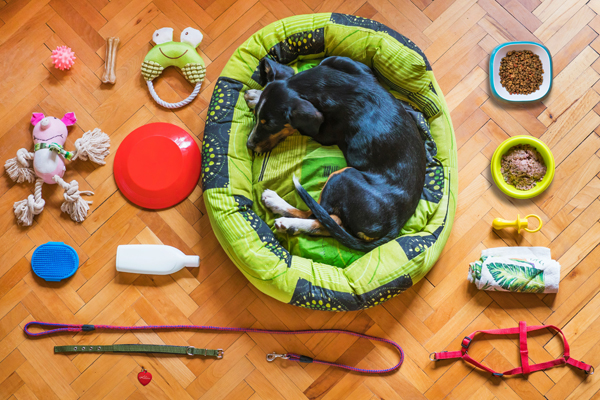
The best laid plans can change in and instant. Preparing for unexpected situations will ensure fur friends have all the essentials they need for their wellbeing. Check out these tips on how to create an emergency kit for pets.
Container or backpack – Decide on how you are going to store the pet essentials. If you’re home or region is prone to flooding, high moisture or wet conditions, a waterproof container may be a good option. For easy transport in an emergency, a backpack always works well. Consider all the items that you may want to carry during an emergency, and decide on the most suitable option for you and your pet.
Food and water – If possible, pack food in an airtight container and include enough food to last your pet pal for at least three days. Collapsible bowls will come in handy to provide fresh water and food for your pet. Including some bottled water in your kit is also a clever move.
Medications – If your doggo, kitty or other pet needs medication, ensure that a supply of their medicines is packed in your kit. Include copies of medical records, and provide a copy of a set of records for your friend or relative to hold on to as well. Medical records should be up-to-date with your pet’s latest vaccinations and contact information for your vet.
First aid – Ensure your emergency kit has first aid supplies to ensure you are ready for crisis treatment. Include disposable gloves, sterile gauze pads, adhesive tape, antiseptic wipes, scissors, tweezers, and medical balms, creams and ointments suitable for use on pets and approved by your vet.
ID Check – Ensure contact details are up to date on pet ID tags and their microchip. Include a current photo of your pet in your kit in case they get lost.
Familiar items – Include some of your pet’s favourite toys and treats in the pack. During an emergency, comfort items that are familiar to your pet will ease their anxiety and help them to stay calm. Be sure to include an extra lead and collar, just in case the one they are wearing needs to be replaced.
Contact list – Include a list of contacts such as the vet, local animal shelters, and pet friendly accommodation nearby in case you need to move locations. It’s worthwhile also to include a list of some of the familiar places your pet has visited, including local dog parks, so you can use these places as a starting point in a search for your pet.
List your pet’s routine – Include an outline of your pet’s feeding, exercise and sleeping schedule as well as any behaviours specific to your pet.
Set a reminder to regularly check your pet’s emergency kit to change expired medications and food. Update any changes to your pet’s needs or behaviours as appropriate.
Remember to keep your kit in an easily accessible place and be sure to advise house and pet sitters of the emergency kit’s whereabouts before you head away on holidays.